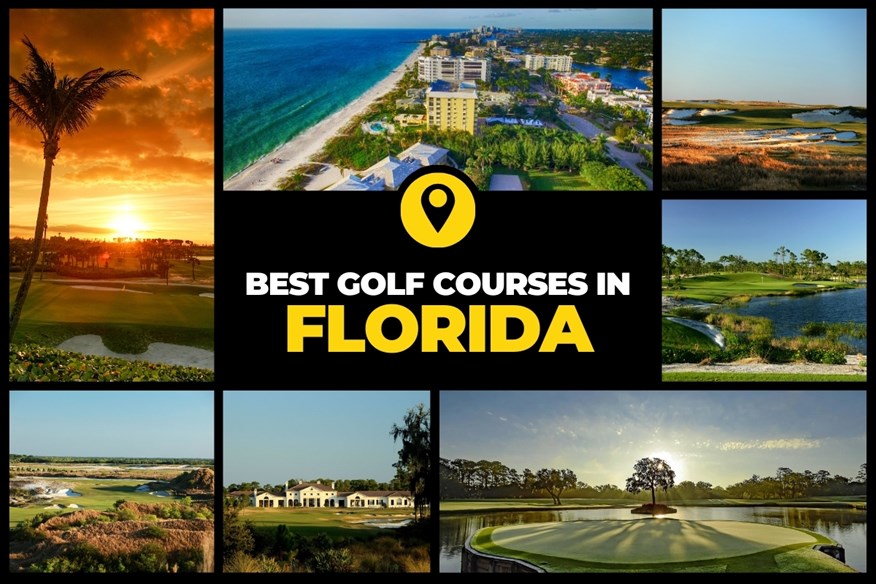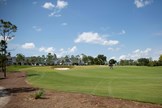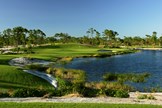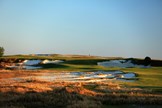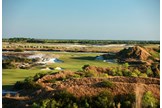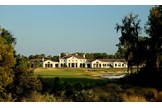Florida’s Best Golf Courses: There’s more to the Sunshine State than theme parks and beaches
Last updated:
Travelling to the sunshine state and planning a break from the theme parks and beaches? These are the best golf courses in Florida for you to get your golfing fix.
Despite being home to some of the best golf courses in the USA, the Sunshine State invariably gets a pretty bad rap for its golf courses as a large percentage of them exist only to sell houses. Couple that with Florida’s lack of elevation (its highest point – Britton Hill – if just 345ft above sea-level) and the fact outsiders tend to associate it with sweaty swampland and it’s no great surprise many won’t give its golf the time of day.
Florida is a big place, though – 14,000 square miles larger than England and it would fill 80% of Great Britain – and there are 1,250 courses here. Surely some of them are worth playing. Actually there’s probably far more than you imagine, including a good many rightly described as world-class. And, given the surge of high-quality course construction currently going on in Martin County where a total of nine upmarket private courses on five properties are being built, it’s fair to say competition for the state’s top-spot will soon become way more intense than it already is.
A lot of Florida’s best courses are found in the moneyed retirement havens on the southeast coast, where the golf is often private and very exclusive. There are, however, pockets of excellence around its other major cities – Jacksonville, Tampa, Orlando, Fort Myers, and Tallahassee. You’ll also find a lot of good golf in the northwestern corner of the state, an area known as the ‘Panhandle’.
The 10 Best Golf Courses in Florida
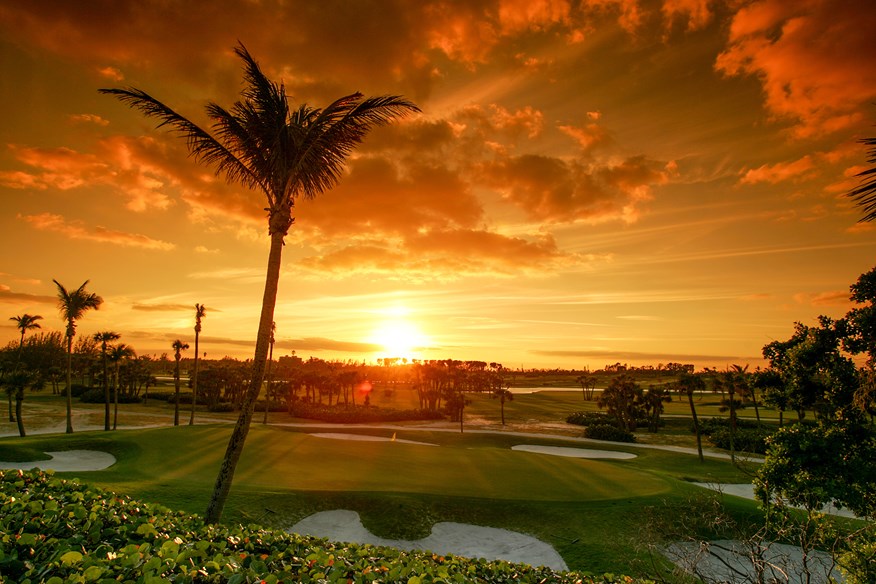
1. Seminole Golf Club
Course details: 6,836 yards, par 72
Green fee: Private
Website: seminolegolfclub.com
Telephone: 561-626-0280
The word ‘genius’ is overused these days, but the quality and variety of Donald Ross’s designs, and how they have stood the test of time – every bit as appealing now as they were 100 years ago – mark him out as the genuine article. The native of Dornoch, Scotland who emigrated to the US in 1899, was a competitive golfer, greenkeeper and clubmaker but found his true calling in course design, building everything from small-town municipals to prominent resort courses to prestigious private clubs many of which have been used for the US Open and USPGA Championship. A number of the 400 or so courses he designed or redesigned are internationally-known though the greatest of them all may well be Seminole in the coastal Florida town of Juno Beach, about 90 minutes north of Miami.
It opened on January 1st, 1930 and its 140 acres are now hemmed in by the Atlantic, a freeway and two sides of suburbia. Creating so intriguing and challenging a course on so small a property took great skill, but Ross’s routing between two dune ridges and through a swampy section made the absolute most of what features he had. Dick Wilson made changes to the greens and added bunkers in the 1950s (when Ben Hogan would prepare for the Masters by spending time here) and much of his work remains, though Ross’s routing remains the star of the show. Bill Coore and Ben Crenshaw have carried out some restorative work in recent years, removing palm trees and re-establishing the course’s exposed character.
Because the extremely exclusive club has never sought publicity plus the fact it sits on too small a property for a major professional event, Seminole didn’t appear on TV until 2020 when the TaylorMade Driving Relief Match, featuring Matthew Wolff, Dustin Johnson, Rory McIlroy, and Rickie Fowler, was played. The 2021 Walker Cup matches was also contested here, giving TV viewers another chance to see one of America’s best.
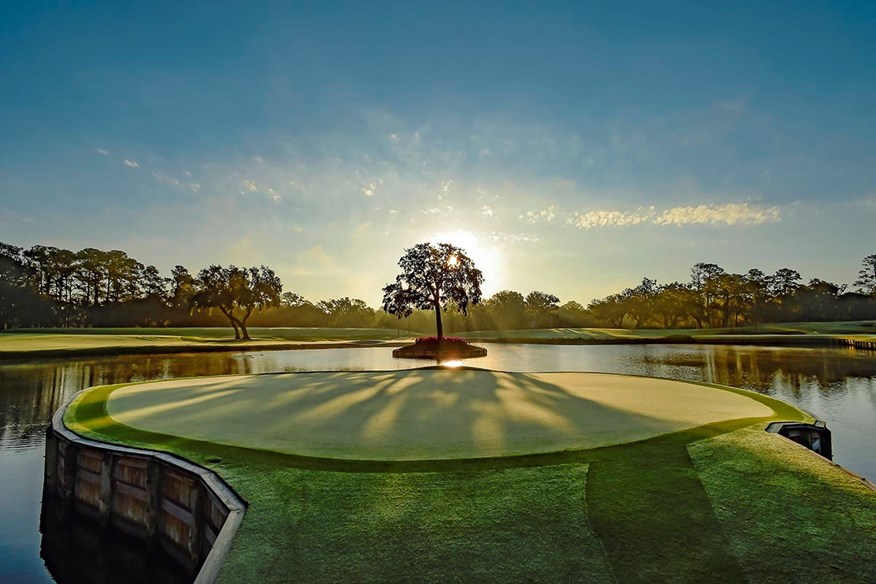
2. TPC Sawgrass
Course details: 7,275 yards, par 72
Green fee: $900
Website: tpc.com/sawgrass
Telephone: 904-273-3430
Pete Dye’s transformation of a 415 acre swamp, 25 miles southeast of Jacksonville, into the Stadium Course at TPC Sawgrass (along with its neighbour, the Valley Course) was a truly remarkable achievement. Indeed, Dye is another of golf’s great innovators who has earned the ‘genius’ tag. The site had been purchased for $1 by then-PGA Tour commissioner Deane Beman who envisioned greens at tournament venues surrounded by ampitheatre seating. After opening in 1980, the course hosted its first Players Championship in 1982 when it received harsh criticism for being too severe. Ben Crenshaw called it “Star Wars golf designed by Darth Vader” and Jack Nicklaus said it didn’t suit him because he’d never been much good at stopping a ball “on the hood of a car”.
After Dye softened a lot of the greens’ contours, the feeling changed and the course has been highly respected ever since, playing host to its 42nd Players Championship in 2024. Its most recognizable hole is, of course, the 137-yard 17th whose island green (it’s actually linked to the mainland by a narrow walkway) is surrounded by water and 3,912sqft in size – a relatively small target but one that seems significantly smaller when you stand on the tee. Dye carried out a major renovation is 2006/7 and, in 2016, several holes were remodeled by PGA Tour Design Service’s Steve Wenzloff who changed the somewhat bland 12th hole into a terrific drivable par 4.
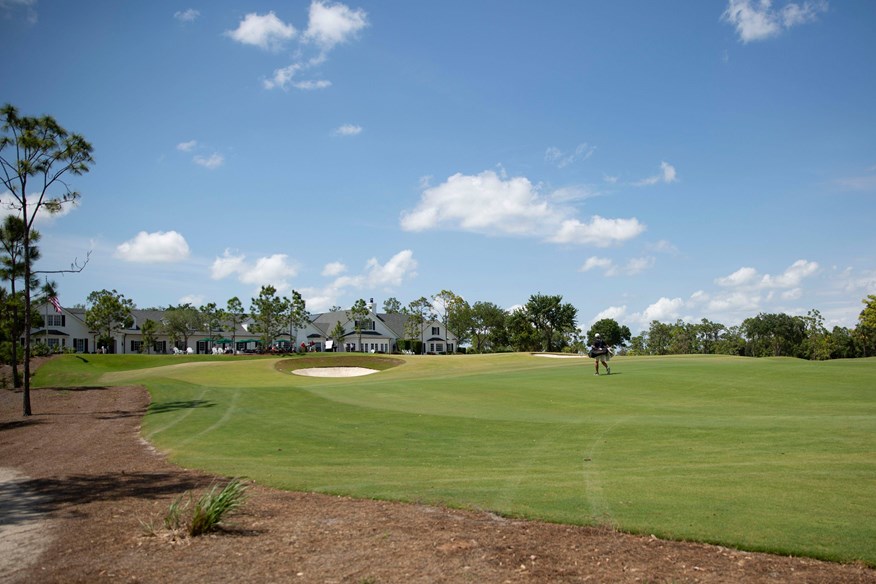
3. Calusa Pines Golf Club
Course details: 7,119 yards, par 72
Green fee: Private
Website: calusapinesgolfclub.com
Telephone: 239-348-2220
A battle against cancer can have a significant effect on the way a man sees the world, prompting him to make decisions he might not have done prior to the diagnosis. Gary Chesnoff, a successful Chicago venture capitalist had a rare form of the disease and, with seemingly only months to live, decided to make his mark on the Florida landscape hiring Michael Hurdzan and Dana Fry to turn a fairly unremarkable patch of flat scrubland a few miles east of the upmarket town of Naples into a fantasy golf course/club with just 275 members.
The architects dynamited rocks for months, dug huge lakes, created massive sand scrapes, and imported alien trees creating a wholly artificial layout that opened in 2001. Purists might not approve, but you’d have to be pretty short-sighted not to appreciate the amazing job the designers and their team of engineers, shapers, and construction/irrigation experts performed here.
4. Mountain Lake Country Club
Course details: 6,650 yards, par 70
Green fee: Private
Website: mountainlakeflorida.com
Telephone: 863-676-5900
In 1907, Charles Blair Macdonald, a wealthy stock broker from Chicago with a gregarious but volatile temperament, hired a local civil engineer named Seth Raynor to assist in building his dream golf course – the National Golf Links of America on Long Island east of New York City. Raynor, a 33-year-old graduate of Princeton University, knew how to build roads, sewers and the like but had no experience of golf, whatsoever, either playing it or creating the courses on which it was played. The pair hit it off famously and Raynor soon learned his boss’s design techniques and philosophy, becoming a highly sought-after architect himself and designing about 60 courses between 1914 and 1926 when he died of pneumonia aged just 51.
Macdonald had more or less ceased designing courses when Raynor was hired to build 18 holes at a millionaire’s winter retreat a few miles north of Lake Wales, 60 miles east of Tampa. The two halves came separately – the front nine in 1917, the back four years later – and feature a handful of original holes Raynor built using what he had learned from Macdonald as well as a few of the famous ‘template’ holes they have become famous for – Biarritz, Redan, Road, Punchbowl. Architects Brian Silva, Ron Prichard, and Tyler Rae have worked on the course in recent years restoring Raynor’s original design.
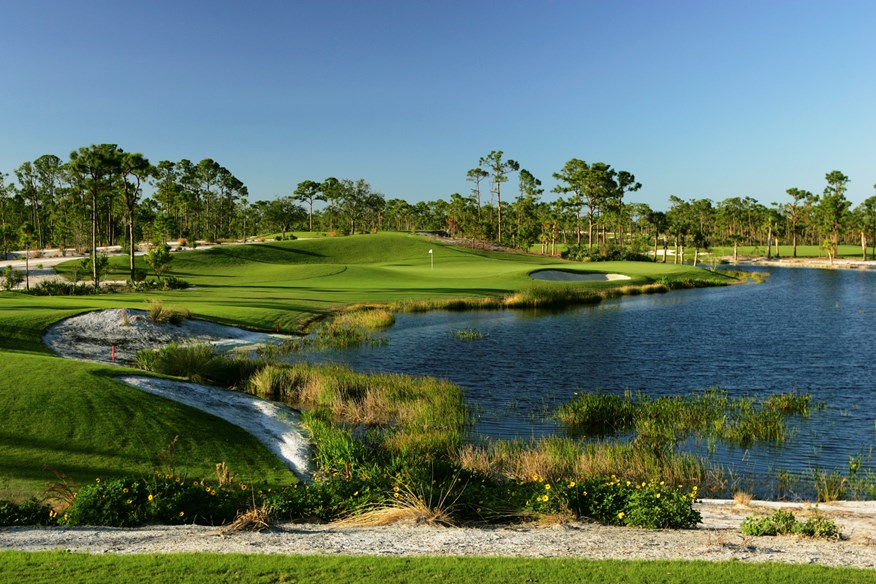
5. McArthur Golf Club
Course details: 7,251 yards, par 72
Green fee: Private
Website: mcarthurgolf.com (but non-members won’t get far past a picture of the course on the home page)
Telephone: 772-545-3838
The southeast corner of the state and the coastline extending north from Miami is home to a number of quiet, well-heeled clubs that aren’t very well-known necessarily and which very few golfers ever get to see or play. All of them are highly-regarded, but the word is that when local caddies talk about neighbouring courses (including Jack Nicklaus’s Bear’s Best, Greg Norman’s Medalist, and Michael Jordan’s Grove XXIII), McArthur usually receives the highest praise.
It was developed by an investment group that includes McArthur Dairy Farms which owns the property and is the major shareholder in the club, former American football great Dan Marino, and three-time major champion Nick Price who lives nearby and was approached by the dairy farm to design the course which opened in 2004. Price formed a collaboration with Tom Fazio and, together, they incorporated wetlands in creating something truly special with vast areas of exposed sand, sugar-white sand ridges and beautifully-contoured greens. Bill Coore and Ben Crenshaw built a second course at the club which opened in 2023.
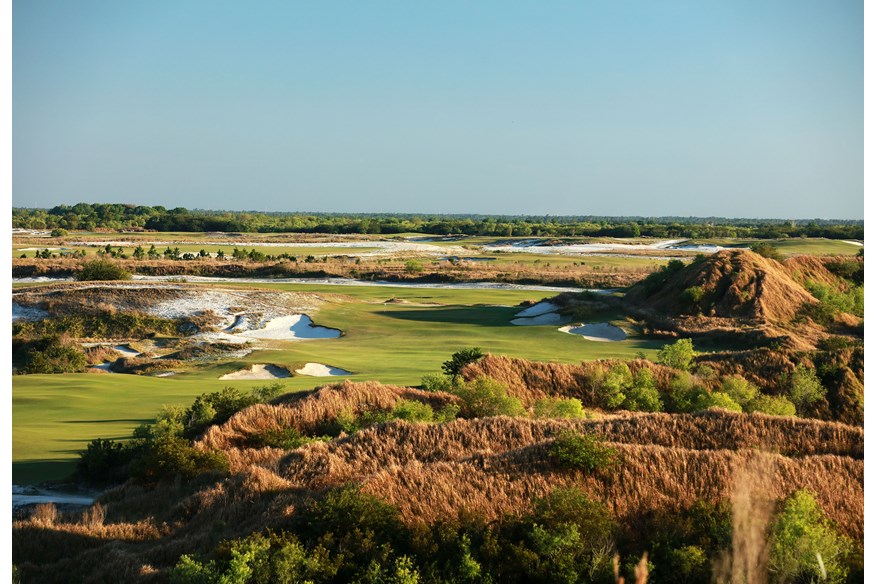
6. Streamsong (Red)
Course details: 7,110 yards, par 72
Green fee: $420
Website: streamsongresort.com
Telephone: 863-428-1000
Around 2007/8 Richard Mack, the executive VP for Mosaic which, during the 1960s, mined 300,000 acres of central Florida for the phosphate and potash used in commercial fertilizers and who oversaw the company’s Florida land holdings, began looking into the possibility of converting the mines, disused since the late 1960s, into a golf resort. The mining operation had left 15 million cubic yards of quality sand and Mack, a keen golfer who recognized the huge potential of the land which was now covered not only with the sand (with some of the ‘dunes’ reaching 75ft in height), but also numerous lakes and 50 years’ of plant growth, knew exactly who to call. At first though, Bill Coore wasn’t terribly thrilled about scouting a site in Florida, saying the place didn’t really need another flat golf course. He went though and, a few minutes after setting out on a walk to inspect the proposed site, was on the phone to Crenshaw saying he wouldn’t believe what was there.
The duo, together with Tom Doak who had also been hired to build a course, came up with two layouts without really knowing who would eventually build which 18. Actually, they found only 31 holes, so Coore and Crenshaw would need to use slightly less-desirable land to create the first five holes of their Red Course. Of course, those holes are so good you wouldn’t know they’d been built on inferior land. The course is full of interesting shots with firm, linksy turf promoting the ground-game and asking for creativity. A couple of target-style holes with sizeable water features add to a heady mix of challenges that you won’t forget in a hurry.
7. Jupiter Hills Club
Course details: 7,369 yards, par 70
Green fee: Private
Website: jupiterhillsclub.org (again, don’t expect to see much beyond the picture on the home page)
Telephone: 561-746-5151
George Fazio won twice on the PGA Tour and lost a playoff with Lloyd Mangrum and eventual winner Ben Hogan for the 1950 US Open at Merion. When his playing days were over, he transitioned into golf course design and, like most golfers, dreamt one day of owning his own golf course. When a parcel of sandy land on the Florida coast north of West Palm Beach became available he went for a look and instantly knew he’d found his ideal site. He quickly called the wealthy friends he’d made in the entertainment and business worlds seeking investment (Bob Hope and Bill Ford, grandson of Ford Motor company founder, Henry Ford, each put up $120,000).
The site featured established trees and a 75ft-tall ridge of sand that distinguished it from most of the flat sites in Florida. Fazio who designed the course alongside his nephew, Tom, described the course they built as a mix between Pine Valley and Seminole. The land was so good, the Fazios shifted only 87,000 cubic yards of soil during construction. The Hills Course (the neighbouring Village Course opened in 1978) was renovated by Tom Fazio and his son Logan in 2006 when the entire course was regressed, new bunkers were built, and new tees were added.
8. Belleair Country Club (West)
Course details: 7,124 yards, par 72
Green fee: Private
Website: belleaircc.com
Telephone: 727-461-7171
As was the case with a lot of early golf clubs, Belleair’s first few holes were laid out by club members (in 1897) who had plenty of energy and enthusiasm but weren’t really familiar with the finer points of golf course design. In 1915, the club realized a more professional hand was needed, so engaged Donald Ross to make something of Course No. 1 (now the West Course), and design a second course – Course No. 2 (East). The Scotsman returned nine years later to renovate both creating 36 very highly-regarded holes.
In 2017, after decades of minor alterations and unchecked tree/plant growth, Dana Fry and Jason Straka were chosen to renovate the West Course but, with Covid, various permitting issues, and escalating costs, work didn’t actually get underway until early 2022. Using Ross’s 1924 drawings of the course, Fry and Straka restored the original by filling in man-made ponds, reconstructing streams that had once crisscrossed the course, and removing trees to enhance the views of Clearwater Harbor. They also rerouted the first three holes, built a new par-3 7th whose green jutted into the bay and, perhaps best of all, shifted the 6th fairway to the right so that it now sits hard against the water creating a scary, but wonderfully-strategic hazard.
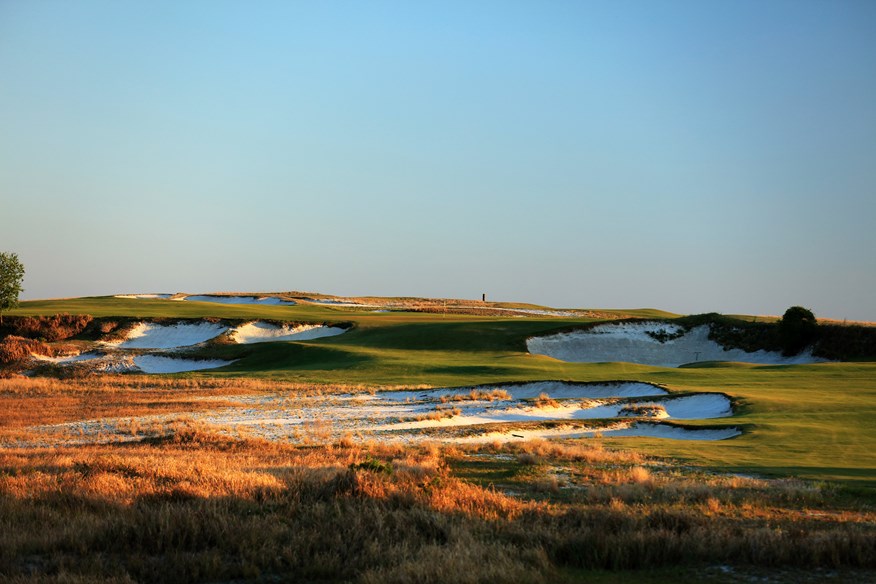
9. Streamsong (Blue)
Course details: 7,276 yards, par 72
Green fee: $420
Website: streamsongresort.com
Telephone: 863-428-1000
As mentioned above in the text for Streamsong Red, Bill Coore, Ben Crenshaw, and Tom Doak devised the routing of the resort’s first two courses together. So some of the holes on the Blue Course, which Doak ended up building, were actually identified by Coore, just as some of the Red Course’s holes were found by Doak. Once the teams had decided who would be building which course (Doak chose the Blue routing) Doak’s Renaissance Golf Team got to work using the sand hills, lagoons, mounds, lakes, and swamp to create another hugely-enjoyable course that begins with a superb short par-4 whose tee sits atop a 75ft-tall dune.
Doak’s greens have a lot more movement than Coore-Crenshaw’s, and there are more water carries like at the fantastic par-3 7th that requires a mid-iron hit diagonally across the lagoon to a heavily-contoured green surrounded by tall dunes. Apart from the section between the 8th and 12th holes, the Blue Course is situated in the middle of the property and surrounded by Red holes. It is a beautiful and thought-provoking test and far from easy.
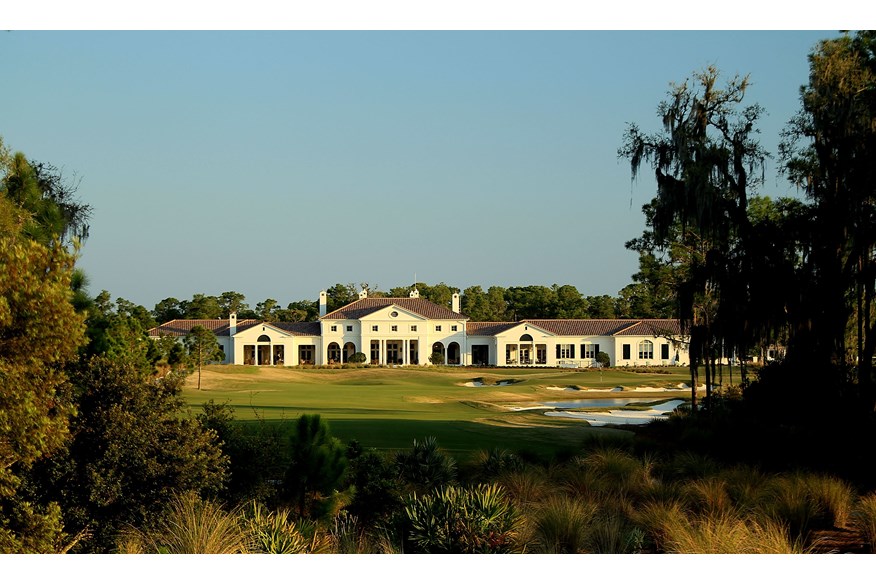
10. The Concession
Course details: 7,477 yards, par 72
Green fee: Private
Website: theconcession.com
Telephone: 941-322-1922
Thirty-seven years after Jack Nicklaus sportingly gave Tony Jacklin a two-foot putt to tie their final afternoon singles match (and indeed the whole event which finished 16-16) at the 1969 Ryder Cup played at Royal Birkdale, the two collaborated on the design of a Florida course that commemorates the moment and which 18 years after being named the best new private course in the country by multiple national titles remains in those publications’ top 200 in America.
While Nicklaus provided the main design expertise behind the project, Jacklin chipped in with a number of suggestions. The holes wind through wetlands, meadows, a pine forest and oak hammocks (trees and shrubs grow form a shallow, nutrient-rich soil and form a canopy above a dense layer and grass and other vegetation beneath) on a massive 520-acre site an hour south of Tampa. Nicklaus says the small-ish, contoured greens were inspired by those at Sebonack on Long Island, New York, which he was working on simultaneously with Tom Doak. The Concession hosted the 2021 WGC Workday Championship won by Collin Morikawa.
Best Golf Courses in Florida – Honorable Mentions
Streamsong (Black) – Gil Hanse’s fantastic addition to the central Florida resort is a par-73 with massive greens – (public)
John’s Island (West) – The club possesses courses by Tom Fazio, Jack Nicklaus, and Pete Dye. Fazio’s West Course is generally considered the best of them – (private)
Medalist – As good a course as Greg Norman has designed – (private)
Cabot Citrus Farms – A reboot of two Tom Fazio designs at World Woods. Two new courses by Kyle Franz and Mike Nuzzo – (public)
Park at West Palm – a fantastic remodel of Dick Wilson’s West Palm Beach Golf Course by Gil Hanse and Jim Wagner – (public)
